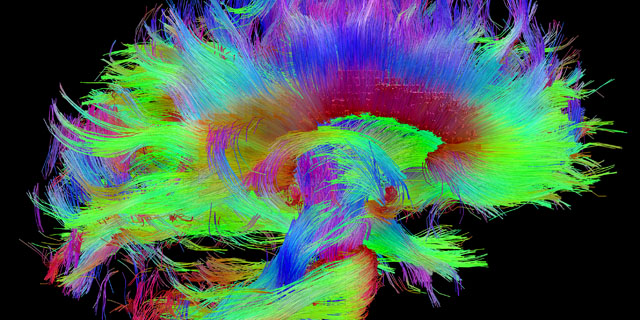Stroke Rehabilitation in Learning Spaces
Evaluating the design of stroke rehabilitation facilities

One in six Australians experience a stroke in their lifetime and this number is set to increase as our population ages. Many people who have a stroke require inpatient rehabilitation to re-learn skills or abilities such as walking or speaking, and this re-learning is dependent on their behaviour and environment post-stroke. Inpatient rehabilitation facilities are often located in refurbished acute medical wards or have been designed following a model that promotes bed rest and isolation – behaviours, which may be detrimental to learning. There is currently no established means of determining whether or how the design of these buildings impacts on patients and current means of evaluation place no emphasis on the environmental requirements unique to re-learning.
An interdisciplinary research team from The Florey Institute of Neuroscience and Mental Health and The Learning Environments Applied Research Network is conducting a project to develop a structured approach to evaluating the design of inpatient rehabilitation facilities for stroke patients. To carry out this project, the research team has engaged a multi-disciplinary community of experts in neuroscience, healthcare environments, and learning environments including clinicians, researchers, architects, designers, policy makers, and patient consumers with experience of stroke rehabilitation.
Over two workshops, these experts used Value-Focused Thinking to iteratively identify what they considered important in the design of rehabilitation facilities for re-learning after stroke and to structure these important criteria into a hierarchy of values.
The final hierarchy suggested that an optimal stroke rehabilitation building should:
- maximise the efficiency of the facility (including maximising the responsiveness of the space, minimising cost, and minimising time);
- maximise the effectiveness of the facility i.e., patients’ outcomes (including maximising opportunities for physical and cognitive function);
- foster emotional well-being of staff, patients, and family/friends; and
- maximise the safety of staff, patients, and family/friends.
The experts then suggested appropriate existing measurement tools or approaches and mapped these onto the agreed hierarchy of values. The final suite of agreed measurement tools and approaches comprised a combination of qualitative and quantitative methods from varied fields including psychology, design (learning environments and healthcare environments), space syntax, and rehabilitation medicine.
The new evaluation approach will be piloted in a stroke rehabilitation facility in 2018. The results of this project will inform architects and planners as to what is important in the design of rehabilitation facilities and will work to ensure that these spaces support re-learning after stroke.
[Source: Ruby Lipson-Smith, Research Officer, Peter MacCallum Cancer Centre and PhD student, Florey Institute of Neuroscience and Mental Health]